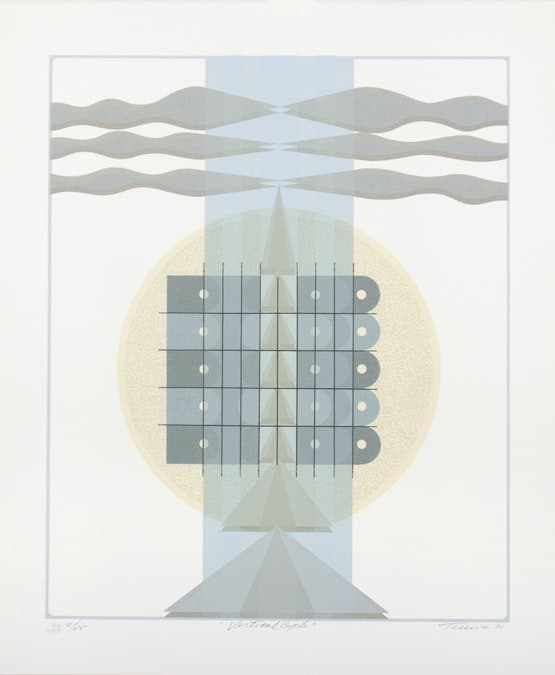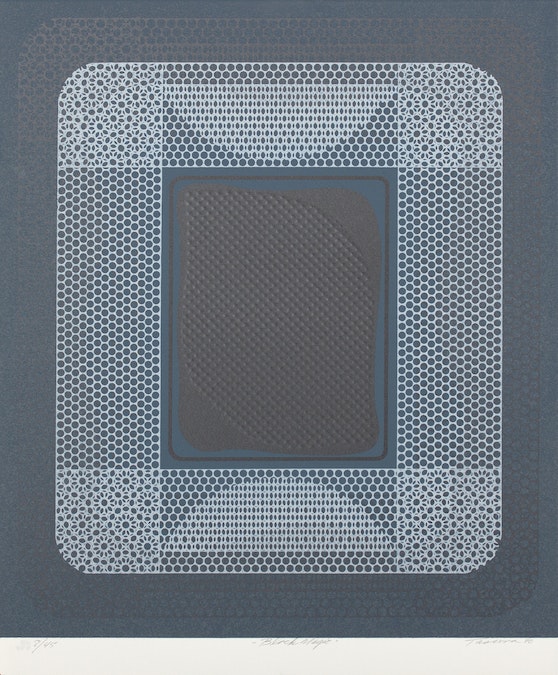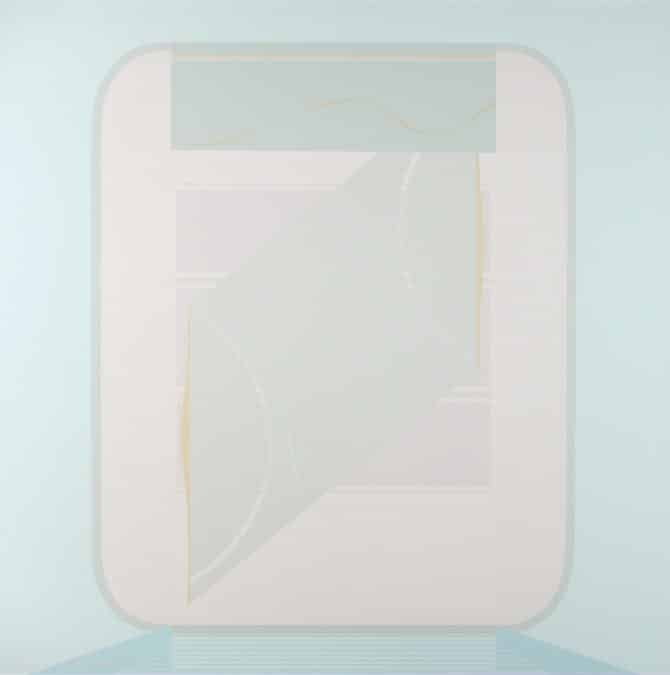Tony Tascona, the “godfather of the Manitoba arts scene,” spent more than 40 years immersed in artistic exploration, embracing an ever-transitioning style that nevertheless upheld a lifelong exploration of shape and form.
The varied experiences and encounters in Tascona’s life all seemed to further solidify his passion for painting, spurring innovations in media and his eventual recognition as one of the country’s most impactful and sought-after artists.
Here, we share the artistic journey of this indispensable member of the Canadian art scene, in celebration of two Tascona creations, Light as a Feather and Take Five + One, which are available on the ArtRow marketplace.

Exploring Shape and Form
Tony Tascona was moved to pursue art from an early age, despite a promising turn as a baseball player. After serving during the final year of WWII, he discovered that Veteran Affairs would sponsor his degree at the Winnipeg School of Art. Like many artists, however, following graduation, he found himself pursuing odd jobs to support his young family until he found work first at Canadian Aviation Electronics and then at Air Canada.
The metals and forms of the aviation industry immediately appealed to Tascona. Over his time in the field, he became the authority on these varied materials and the products best suited for them, and this knowledge intricately informed his artistic pursuits.
When, in the early 60s, Air Canada offered Tascona a position in Montreal, he leapt at the opportunity to relocate his family and immerse himself in the city’s iconic art scene. There, as Pierre Theberge, the former director of the National Gallery of Canada, explained, the local artists “were reinventing the modern language with geometric abstraction.” It proved to be a wonderful match for Tascona’s interests and skills.
Though Tascona moved his family back to Winnipeg a few years later, Montreal marked a turning point in his style and presence as an artist, and not long after returning to Manitoba, he left the aviation industry to focus on his art full-time.

Incorporating the Industrial
Much of Tascona’s art revolved around the control and layering of lacquer paint. Though critics questioned his choice of aluminum, he was drawn to this metallic canvas, and the combination of these industrial materials became a signature of his work. Over time, he explored epoxy resins, as well, and many of his major commissions—such as those at the Freshwater Institute, Manitoba Law Courts, and Saint Boniface Hospital Research Center— are translucent, two-dimensional resin sculptures that tint and fracture the light from where they hang, high above the ground.

Artistic Evolution
Changes in Tascona’s health later provided opportunities for further stylistic transition. The deleterious effects of decades of working with toxic chemicals like lacquer and paint thinner prompted him to pursue materials he had not used since leaving art school, and his works from this period feature more traditional approaches like acrylic on canvas.
Then, spinal stenosis forced the artist to undergo surgeries and question whether he would ever walk again. During his recovery, he returned to drawing and discovered a whole new form of creativity. In a video interview, Theberge said of Tascona’s drawings: “The clarity of his line—he does not hesitate. There is a certain exuberance in the form, and I can only describe it as energy.”

A Lasting Legacy
Tascona’s contemporaries and friends were quick to describe him as an artist who forged his own path. He had a romance about his approach to art, the founder of Border Crossings Magazine, Robert Enright, explained. “He was highly respected because he was an artist who never joined the university [or attached himself to dealers]. He always did it on his own, like a kind of slightly smaller Frank Sinatra of the art world, doing it his own way.”
Though he was not affiliated with a postsecondary institution, Tascona deeply believed in supporting artistic education; the Tony Tascona Bursary Fund for a student studying Art History at the University of Winnipeg was established in 1997.
Tony Tascona’s lifelong dedication to artistic curiosity and undeniable skill have solidified his legacy in the Canadian art scene. His work evokes lightness in heavy industrial materials and brings synthetic geometric forms to life.
As Enright said, Tascona’s work “demands a kind of almost philosophical response when you look at it…You think about time and space, and as soon as you think about time and space you’re entering the terrain of the spiritual. There’s a way in which Tony’s art is always hinting at that sense of spiritual entry.”
One need only look upon Light as a Feather and Take Five + One to experience the impact of which Enright speaks.




